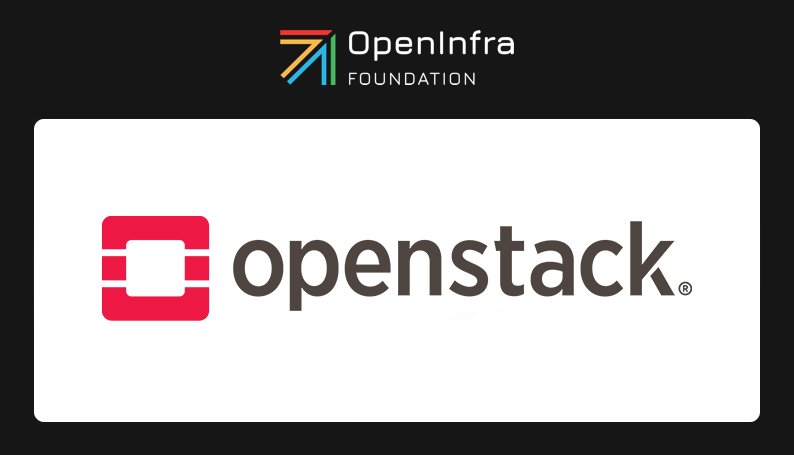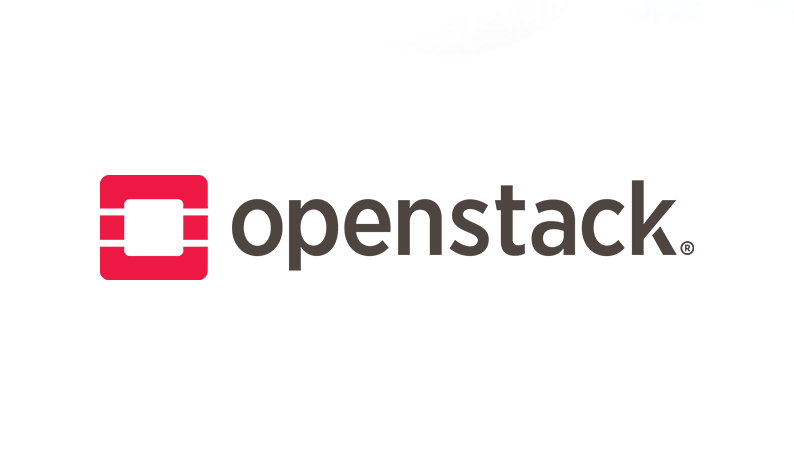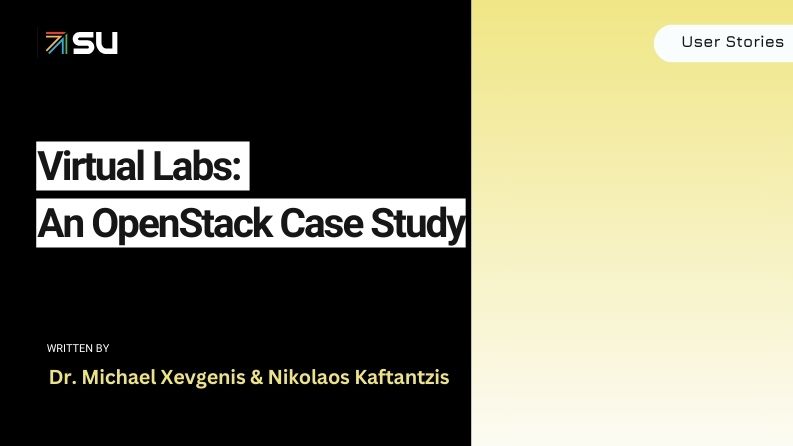OpenStack enables the deployment and management of virtual machines, storage volumes, and network configurations, and supports various hypervisors, storage backends, and networking technologies. OpenStack also provides APIs and a web interface for users to access and manage their cloud resources.
OpenStack is composed of a variety of interdependent components that work together to provide a complete cloud computing platform. These components include:
- Compute (Nova): A component that provides scalable, on-demand access to computing resources, including virtual machines (VMs) and bare metal servers.
- Object Storage (Swift): A distributed object storage system for storing and retrieving large amounts of data.
- Block Storage (Cinder): A component that provides persistent block-level storage for use with VMs.
- Networking (Neutron): A component that provides networking-as-a-service (NaaS) for use with VMs and other cloud resources.
- Identity (Keystone): A component that provides authentication and authorization services for all other OpenStack components.
- Image (Glance): A component that provides a repository for VM images.
- Dashboard (Horizon): A web-based graphical user interface (GUI) for managing OpenStack resources.
I’ll discuss the main options for deploying software on OpenStack – including on-premises, public cloud, private cloud, Kubernetes, and progressive deployment like blue-green deployment.
Traditional Software Deployment on OpenStack
On-Premises
An on-premises OpenStack distribution refers to a version of the OpenStack platform that is installed and run on a user’s own hardware, rather than in a public or private cloud. This distribution provides the user with more control over the deployment and management of the cloud infrastructure, allowing for customization and integration with existing IT systems. It is an alternative to using a public or private cloud-based OpenStack deployment and is well-suited for organizations that have specific security, compliance or data sovereignty requirements.
Public Cloud Solutions Based on OpenStack
An OpenStack-based public cloud solution is a cloud computing service that is built using the OpenStack platform and delivered to customers over the internet. In this model, the cloud service provider manages the underlying OpenStack infrastructure and provides customers with access to computing, storage, and networking resources through a web interface or APIs.
Customers can then use these resources to host their applications and data, without having to invest in and manage their own hardware and software. This provides a cost-effective and scalable alternative to traditional IT infrastructure and allows customers to benefit from the features and functionality of OpenStack while leveraging the expertise and infrastructure of the cloud service provider. An example of this is AWS.
OpenStack-Based Private Cloud
A vendor-hosted OpenStack private cloud refers to a cloud computing solution where the OpenStack platform is installed and managed by a third-party vendor, but only used by a single organization. In this model, the vendor provides the hardware, software, and management of the OpenStack infrastructure, while the customer retains control over the deployment and management of their applications and data.
The customer has the benefits of a private cloud, including more control over security and compliance, but without having to invest in and manage the underlying hardware and software. This can be a cost-effective solution for organizations that need the benefits of a private cloud but lack the resources or expertise to build and maintain one on their own.
OpenStack-as-a-Service
OpenStack-as-a-Service (OpenStackaaS) refers to a cloud computing service where the OpenStack platform is provided to customers as a fully managed solution. In this model, the cloud service provider installs, manages and maintains the OpenStack infrastructure, and provides customers with access to computing, storage and networking resources through a web interface or APIs.
The customer can use these resources to host their applications and data, without having to invest in and manage their own hardware and software. The provider typically takes care of all the operational aspects of OpenStack, such as installation, upgrades, security and maintenance, allowing the customer to focus on their applications and data.
Kubernetes Deployment on OpenStack
OpenStack is suitable for deploying Kubernetes for several reasons. It provides scalable infrastructure for deploying Kubernetes, allowing organizations to easily scale their clusters to meet changing demands. OpenStack includes advanced networking features, such as load balancing and security groups, that are well-suited for deploying and managing Kubernetes clusters.
OpenStack in a Kubernetes Container
You can host OpenStack in a Kubernetes container using the OpenStack-Helm project. OpenStack-Helm is a collection of Helm charts that provide a flexible way to deploy OpenStack in a containerized environment, such as Kubernetes.
Here’s an example script for deploying OpenStack in a Kubernetes cluster using OpenStack-Helm:
$ git clone https://github.com/openstack/openstack-helm.git $ cd openstack-helm $ helm install . $ helm upgrade .
Standalone OpenStack with Kubernetes
OpenStack can run on top of a standalone Kubernetes cluster, rather than on top of an existing infrastructure. In this setup, OpenStack services are deployed as containers in a Kubernetes cluster, allowing organizations to take advantage of the scalability, flexibility, and ease of management provided by Kubernetes, while still using OpenStack for their cloud computing needs.
Kubernetes on Ironic-Provisioned Hardware
Ironic is an OpenStack service that provides bare metal provisioning capabilities. It is designed to provision and manage physical servers in a cloud environment, providing a consistent API and workflows for bare metal servers, similar to the way virtual machines are managed in OpenStack.
Running Kubernetes clusters on hardware provisioned by Ironic provides improved resource utilization, consistent workflows, cost efficiency and enhanced control over your hardware resources, making it an attractive option for organizations looking to deploy and manage their Kubernetes clusters in a hybrid cloud environment.
Canary and Blue-Green Deployment in OpenStack
Canary deployment and blue-green deployment are two techniques that can be used to deploy updates to applications in a cloud environment such as OpenStack. Both techniques involve creating a new version of an application and deploying it alongside the existing version, allowing users to access the new version while the old version remains available.
Here’s a brief overview of how to perform canary and blue-green deployment in OpenStack:
- Create a new version of the application and package it in a VM image or container image.
- Use OpenStack’s Compute (Nova) service to launch one or more VMs or containers running the new version of the application in a separate environment from the existing version.
- Set up a load balancer, such as OpenStack’s Load Balancer as a Service (Octavia), to distribute traffic between the old and new versions of the application.
- Initially, only a small percentage of users or a testing environment should be directed to the new version of the application.
- Monitor the performance of the new version and gather feedback from users.
- Once the new version is stable and ready for production, switch the load balancer to send all traffic to the new version. The old version remains available as a fallback in case issues arise with the new version.
- If issues arise with the new version, switch the load balancer back to the old version until the issues are resolved.
Conclusion
OpenStack provides a range of software deployment options for organizations looking to deploy and manage their applications and services in a cloud environment. From public cloud solutions to on-premises distributions and vendor-hosted private clouds, OpenStack provides a flexible and scalable platform for deploying and managing applications.
In addition, OpenStack also supports deployment strategies such as canary and blue-green deployments, which allow organizations to deploy new releases with minimal downtime and reduced risk. Whether you are looking to deploy a simple application or a complex multi-tier solution, OpenStack provides the tools and resources needed to get the job done. With its open source nature and vibrant community, OpenStack is a strong choice for organizations looking to deploy and manage their applications in a cloud environment.
- Kubernetes Troubleshooting: A Practical Guide - May 21, 2024
- Overview of the OpenStack Documentation - March 18, 2024
- Refactoring Your Application for OpenStack: Step-by-Step - December 27, 2023

)










